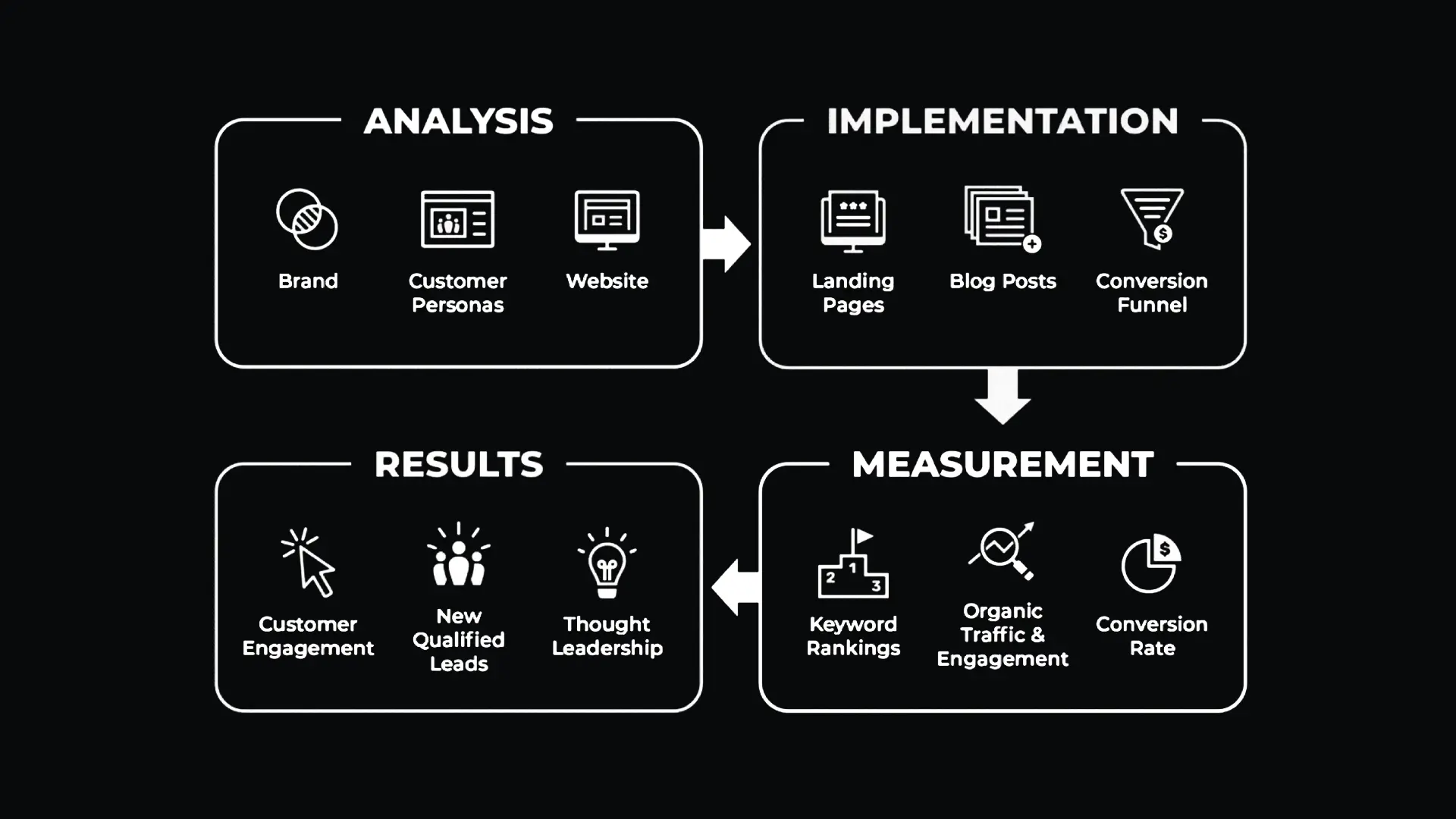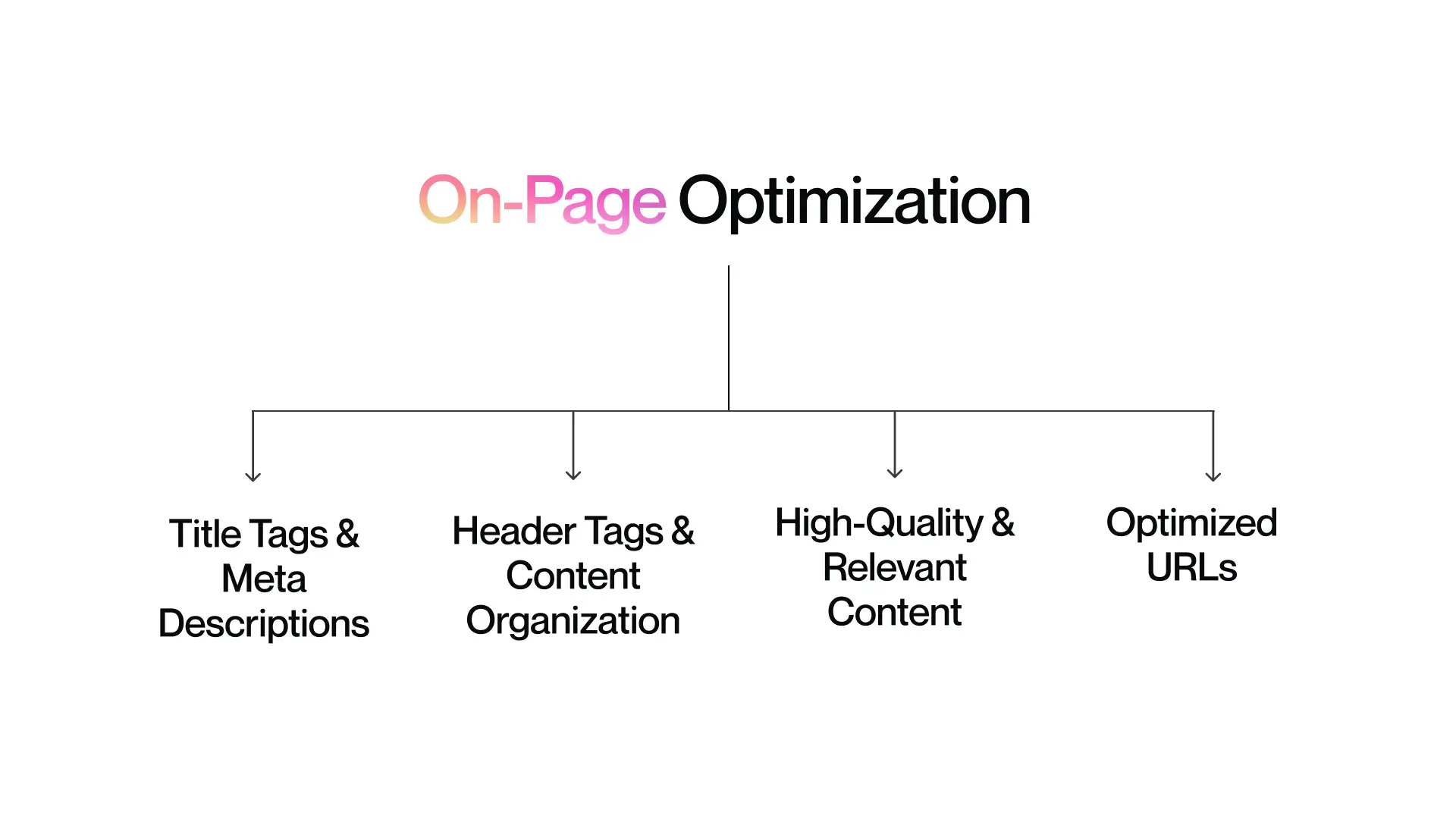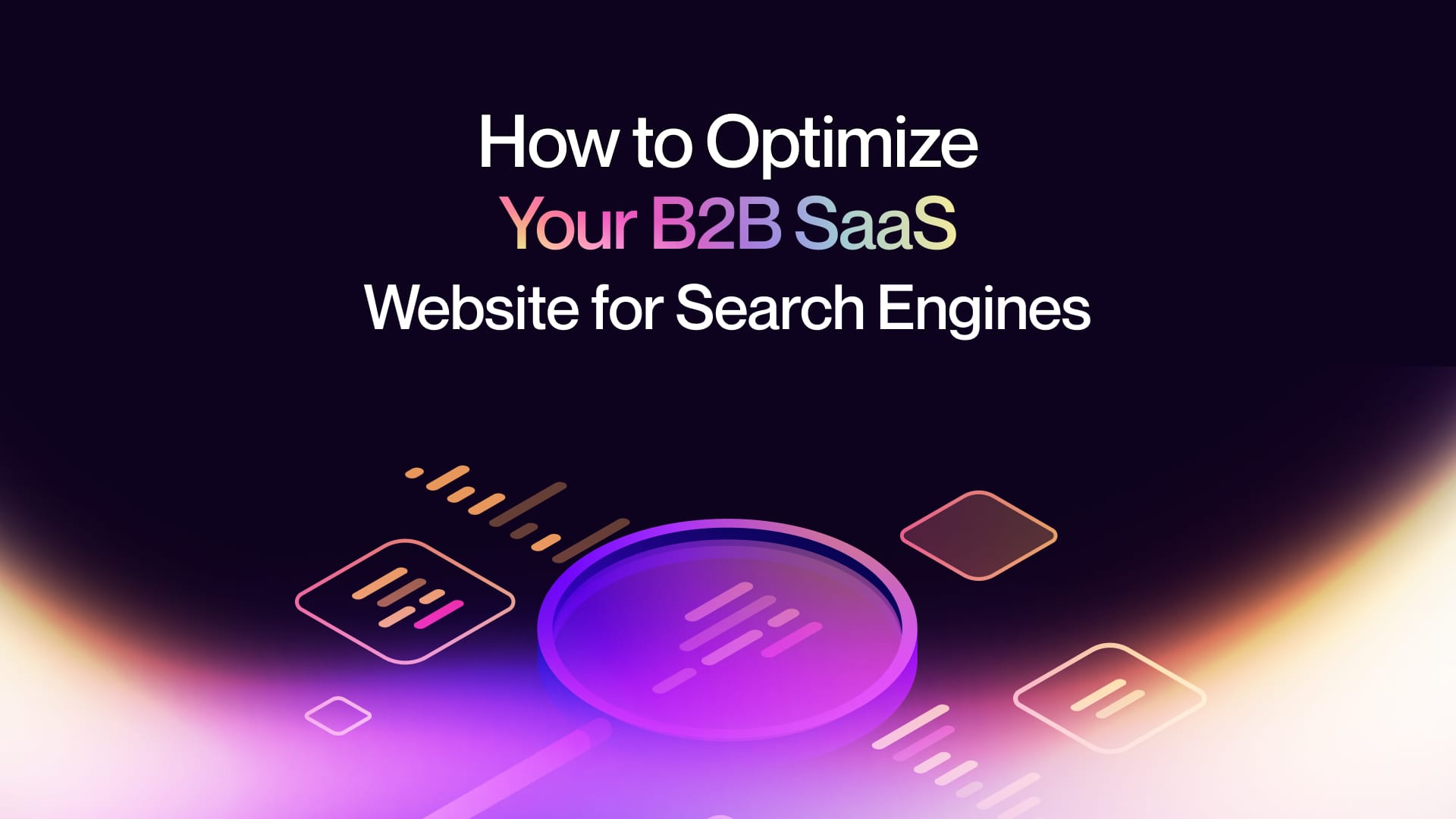In today's dynamic digital landscape, establishing a robust online presence has become indispensable for B2B scale-ups aiming to flourish.
The key to attracting prospective clients and generating high-quality leads lies in securing a prominent position in search engine results.
This is precisely where search engine optimization (SEO) steps in to make a significant impact.
In this article, we will delve into proven strategies and techniques that can optimize your B2B website for search engines, ultimately boosting your visibility and driving organic traffic.
Understanding SEO for B2B

B2B search engine optimization (SEO) is a highly specialized approach designed to optimize the online presence of businesses with the specific goal of targeting other businesses as potential customers.
Unlike traditional SEO practices that cater to a broader audience, B2B SEO employs a tailored strategy that takes into account the unique needs, challenges, and objectives of enterprises operating within specific industries.
To effectively optimize a B2B website, extensive research, and analysis are conducted to identify the target audience, competitors, and industry trends.
This enables the development of a customized SEO strategy that aligns with the specific goals and requirements of the B2B business.
Keyword Research

Keyword research is the cornerstone of a prosperous SEO campaign, providing a solid foundation for success. Start by identifying pertinent keywords like "SEO for B2B," "B2B search engine optimization," "B2B SEO," and "B2B SEO strategy."
Employ keyword research tools to uncover additional long-tail keywords and phrases that align with your industry, products, and services.
Aim for a keyword density of at least 1% in your content, maintaining a natural integration without resorting to keyword stuffing.
On-Page Optimization

On-page optimization is a fundamental aspect of search engine optimization (SEO) that focuses on optimizing individual web pages to enhance their visibility, relevance, and ranking in search engine results pages (SERPs).
This optimization process involves making targeted changes and improvements to various elements of a web page to align it with both the search intent of users and the algorithms of search engines.
Let’s break down On-page optimization in more detail.
Optimized URLs
It is crucial to create search engine-friendly URLs that effectively represent the content of the page.
This can be achieved by incorporating relevant keywords and avoiding generic or vague URLs.
By including descriptive terms that accurately reflect the content, search engines, and users can easily understand what the page is about before even visiting it.
When crafting search engine-friendly URLs, it is important to keep them concise, meaningful, and easily readable.
This means avoiding excessive length, unnecessary characters, or parameters that do not contribute to the understanding of the page's content.
Focus on incorporating relevant keywords or key phrases that are associated with the topic of the page.
Additionally, consider using hyphens (-) to separate words within the URL structure.
This helps search engines interpret the individual words more accurately and improves the overall readability of the URL.
By creating search engine-friendly URLs that incorporate relevant keywords and provide a clear representation of the page's content, you enhance the chances of search engines properly indexing and ranking the page.
Users are more likely to click on URLs that are descriptive and indicate a match with their search intent, leading to higher click-through rates and improved user engagement.
High-Quality & Relevant Content
Creating compelling, well-researched, and informative content is vital to engaging your target audience effectively.
By producing blog posts, Success Missions, and guides, you can address their pain points and offer valuable insights.
This approach not only establishes your expertise but also demonstrates your commitment to providing practical solutions.
When crafting this content, it is essential to strategically incorporate your target keywords throughout the text.
By doing so, you enhance the visibility of your content to search engines, making it more likely to appear in relevant search results.
However, it's crucial to maintain a natural and seamless integration of keywords, ensuring that they enhance rather than disrupt the flow and readability of your content.
By consistently delivering high-quality, keyword-rich content that addresses your audience's needs, you can establish credibility, attract organic traffic, and ultimately achieve higher search engine rankings.
Off-Page Optimization

Off-page optimization in search engine optimization (SEO) refers to the activities and strategies implemented outside of a website to improve its visibility, reputation, and authority in search engine results pages (SERPs).
Let’s break down Off-page optimization in more detail.
Link Building
A crucial aspect of optimizing your website's authority and online visibility is to develop a strong link-building strategy.
This involves acquiring high-quality backlinks from reputable and relevant websites in your industry.
By obtaining backlinks from authoritative sources, you enhance your website's credibility and signal to search engines that your content is valuable and trustworthy.
One effective method is engaging in guest blogging, where you contribute informative and well-crafted articles to other industry-related websites, earning backlinks in return.
Collaborating with influencers in your niche can also help you gain exposure and secure valuable backlinks.
Additionally, consider listing your website in relevant directories and online listings to further expand your online presence and improve your chances of being discovered by both users and search engines.
By implementing a comprehensive link-building strategy, you can enhance your website's authority, boost organic traffic, and improve your overall search engine rankings.
Mobile Optimization
Optimizing your website for mobile is crucial.
You must ensure that your website is mobile-responsive, delivering a seamless and user-friendly browsing experience across a wide range of devices.
With Google's mobile-first indexing, which prioritizes mobile-friendly websites in search results, mobile optimization has become an indispensable factor for achieving B2B SEO success.
By adapting your website to cater to mobile users, you not only meet the expectations of your audience but also improve your chances of ranking higher in search engine results.
Mobile optimization entails implementing responsive design, optimizing page load speed, and optimizing user interface elements for mobile screens.
By prioritizing mobile responsiveness, you can enhance user engagement, increase mobile traffic, and ultimately drive the growth and success of your B2B business in the digital landscape.
Technical SEO
.webp)
Site Speed
Optimal website loading speed is crucial for enhancing user experience and positively impacting search engine rankings.
There are several effective strategies to optimize your website's loading speed.
One approach is to minimize file sizes by compressing images and utilizing efficient coding practices.
This reduces the overall size of your web pages, allowing them to load faster.
Additionally, leveraging browser caching enables browsers to store static resources, such as images and scripts, locally on a user's device.
This way, subsequent visits to your website result in faster load times as the cached resources are retrieved from the local storage rather than being downloaded again.
Another powerful technique is to utilize Content Delivery Networks (CDNs), which distribute your website's content across multiple servers worldwide.
CDNs deliver content to users from the server closest to their geographical location, reducing latency and further improving loading speed.
By implementing these speed optimization strategies, you can significantly enhance the user experience, decrease bounce rates, and increase the likelihood of higher search engine rankings, ultimately driving the success of your website and online presence.
XML Sitemaps
To ensure efficient indexing of your web pages by search engines, it is crucial to create and submit XML sitemaps.
Sitemaps serve as a roadmap for search engine crawlers, providing them with a comprehensive overview of your website's structure and content hierarchy.
By submitting your sitemap to search engines, you increase the chances of your web pages being discovered and indexed accurately.
This leads to improved visibility in search results, as search engines can more effectively understand the relevance and interconnection of your website's pages.
It is important to regularly update and maintain your sitemap as you add new pages or make changes to your website's structure.
By ensuring that search engines have up-to-date access to your sitemap, you facilitate the discovery and indexing of your content, ultimately boosting your website's visibility and organic search traffic.
Final Thoughts
SEO plays a critical role in enhancing the online presence and visibility of B2B businesses.
As the digital landscape continues to evolve, staying up to date with the best B2B SEO strategies and trends can establish a strong online presence, drive organic traffic, and achieve long-term success.
What’s a Rich Text element?
The rich text element allows you to create and format headings, paragraphs, blockquotes, images, and videos all in one place instead of having to add and format them individually. Just double-click and easily create content.
Static and dynamic content editing
A rich text element can be used with static or dynamic content. For static content, just drop it into any page and begin editing. For dynamic content, add a rich text field to any collection and then connect a rich text element to that field in the settings panel. Voila!
How to customize formatting for each rich text
Headings, paragraphs, blockquotes, figures, images, and figure captions can all be styled after a class is added to the rich text element using the "When inside of" nested selector system.






Social Media Engagement
Social media platforms are essential for promoting your content, engaging with your target audience, and expanding brand awareness.
By strategically leveraging social media channels, you can effectively disseminate your content to a wider audience and foster meaningful interactions with your followers.
Encourage social sharing of your content by incorporating social sharing buttons or calls to action, enabling users to easily share your articles, blog posts, or other valuable resources with their networks.
This not only amplifies the reach of your content but also increases the likelihood of attracting more inbound links from relevant sources.
Additionally, actively engaging with your audience through social media platforms allows you to build relationships, address inquiries or concerns, and establish your brand as a trustworthy and authoritative source within your industry.
By consistently utilizing social media as part of your content promotion strategy, you can enhance brand visibility, drive traffic to your website, and cultivate a strong online presence.